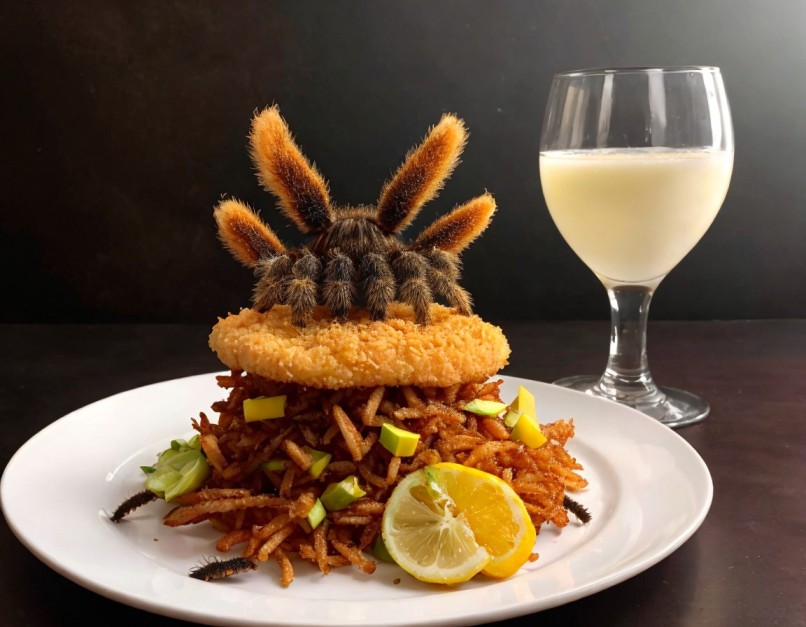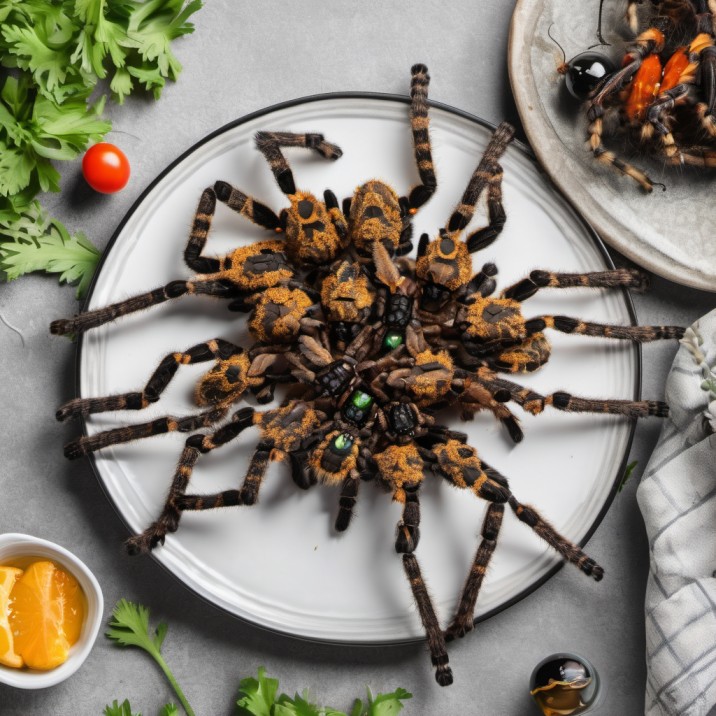Table of Contents
Table of Contents
- Which Country Eat Tarantulas?
- Introduction to Edible Spiders
- Countries Known for Eating Tarantulas
- The Cultural Significance of Eating Tarantulas
- Traditional Practices
- Modern-Day Consumption
- How Are Tarantulas Prepared and Cooked?
- Common Cooking Methods
- Popular Dishes
- Why Eat Tarantulas?
- Nutritional Benefits
- Sustainability
- The Experience of Eating Tarantulas
- Taste and Texture
- Traveler Experiences
- FAQs About Eating Tarantulas
- Conclusion
Introduction
Imagine biting into a crispy, crunchy treat that is not a chip but a spider! Yes, tarantulas are not just scary creatures from movies; they are a delicacy in some parts of the world. In this fascinating journey, we’ll uncover which country eat tarantulas, explore the cultural significance behind this unique cuisine, and understand why these eight-legged snacks are more than just a novelty.
Which Country Eat Tarantulas?
Introduction to Edible Spiders
While the idea of eating spiders might make some people squirm, in certain parts of the world, it’s a common and cherished practice. Tarantulas, in particular, are considered a delicacy in several countries. These spiders are not only a source of food but also a part of cultural heritage.

known Countries for Eating Tarantulas
- Cambodia
- The Most Famous Spider-Eating Country
- In Cambodia, particularly in the town of Skuon, tarantulas are a popular street food. Known locally as “a-ping,” these spiders are often deep-fried and enjoyed as a snack or appetizer.
- Thailand
- A Growing Trend in Exotic Cuisine
- In Thailand, especially in rural areas, tarantulas are eaten as part of traditional diets. They are commonly found in local markets and sometimes appear on the menus of adventurous restaurants.
- Venezuela
- A Unique Amazonian Delicacy
- In the Amazon rainforest of Venezuela, the indigenous Piaroa people consider tarantulas a valuable food source. They roast these spiders over an open fire to create a savory treat.
The Cultural Significance of Eating Tarantulas
Traditional Practices
Eating tarantulas has deep roots in the traditions of various cultures. In Cambodia, for example, it is believed that eating spiders can cure backaches and respiratory problems. This practice likely originated during the Khmer Rouge regime when food was scarce, and people had to turn to unconventional sources of nutrition.
Modern-Day Consumption
Today, eating tarantulas is not only about tradition but also about culinary adventure. In many places, it has become a tourist attraction. Visitors flock to experience the thrill of eating something so unusual, and local vendors benefit from this growing interest.
How Are Tarantulas Prepared and Cooked?
Common Cooking Methods
- Deep-Frying
- The Most Popular Method
- In Cambodia, tarantulas are typically deep-fried until they are crispy. This method is favored because it enhances the spiders’ natural flavors and provides a satisfying crunch.
- Roasting
- A Simpler, Smokier Flavor
- In the Amazon, tarantulas are roasted over an open flame, which gives them a smoky taste and chewy texture.
- Baking
- A Less Common but Interesting Option
- Some cultures bake tarantulas to retain more of their natural flavors and create a dish that is less oily than deep-frying.
Popular Dishes
- Fried Tarantula with Garlic
- A Cambodian Favorite
- This dish features deep-fried tarantulas seasoned with garlic and salt. It’s a popular snack among locals and tourists alike.
- Tarantula Tempura
- A Modern Twist on a Traditional Dish
- In some upscale restaurants, tarantulas are served as tempura, offering a gourmet take on this unique ingredient.
Why different country Eat Tarantulas?
Nutritional Benefits
- High Protein Content
- Tarantulas are rich in protein, making them a nutritious food source, especially in areas where other forms of protein are scarce.
- Low in Fat
- These spiders have a surprisingly low fat content, which makes them a healthy snack option compared to many processed foods.
- Packed with Micronutrients
- Tarantulas provide essential vitamins and minerals, including iron and zinc, which are crucial for a balanced diet.
Sustainability
- Eco-Friendly Food Source
- Harvesting tarantulas is sustainable and has a lower environmental impact compared to traditional livestock farming.
- Promotes Biodiversity
- By consuming a variety of protein sources, communities help maintain ecological balance and reduce dependence on a few key species.
The Experience of Eating Tarantulas
Taste and Texture
Many who have tried tarantulas describe them as tasting like a cross between chicken and fish, with a slightly nutty flavor. The texture can vary from crunchy to chewy, depending on the cooking method.
Traveler Experiences
- A Culinary Adventure
- Tourists often seek out tarantula dishes as a way to immerse themselves in the local culture and push their culinary boundaries.
- A Memorable Souvenir
- Some visitors bring back tarantula snacks as unique souvenirs to share with friends and family.
Conclusion
Eating tarantulas might seem unusual to some, but in certain countries, it’s a common and respected practice. This unique cuisine is not only about survival but also about embracing cultural traditions and culinary adventures. From the streets of Cambodia to the Amazon rainforest, tarantulas provide a nutritious, sustainable, and surprisingly tasty addition to the diet.
By understanding the context and cultural significance of eating tarantulas, we can appreciate this practice as more than just a quirky novelty. It’s a testament to the resourcefulness and creativity of people around the world in finding food sources that are both delicious and sustainable.
FAQs About Eating Tarantulas
- Is it safe to eat tarantulas?
- Yes, when cooked properly, tarantulas are safe to eat. They are typically prepared in a way that eliminates any potential toxins.
- What do tarantulas taste like?
- Tarantulas have a flavor similar to crab or lobster, with a hint of nuttiness. The taste can vary depending on how they are cooked.
- Where can I try eating tarantulas?
- You can try tarantulas in countries like Cambodia and Thailand, where they are sold in markets and some restaurants.
- Are tarantulas nutritious?
- Yes, tarantulas are high in protein, low in fat, and contain important vitamins and minerals.
- Why do some cultures eat tarantulas?
- Eating tarantulas is often a tradition rooted in necessity and has become a part of cultural heritage and culinary exploration.

